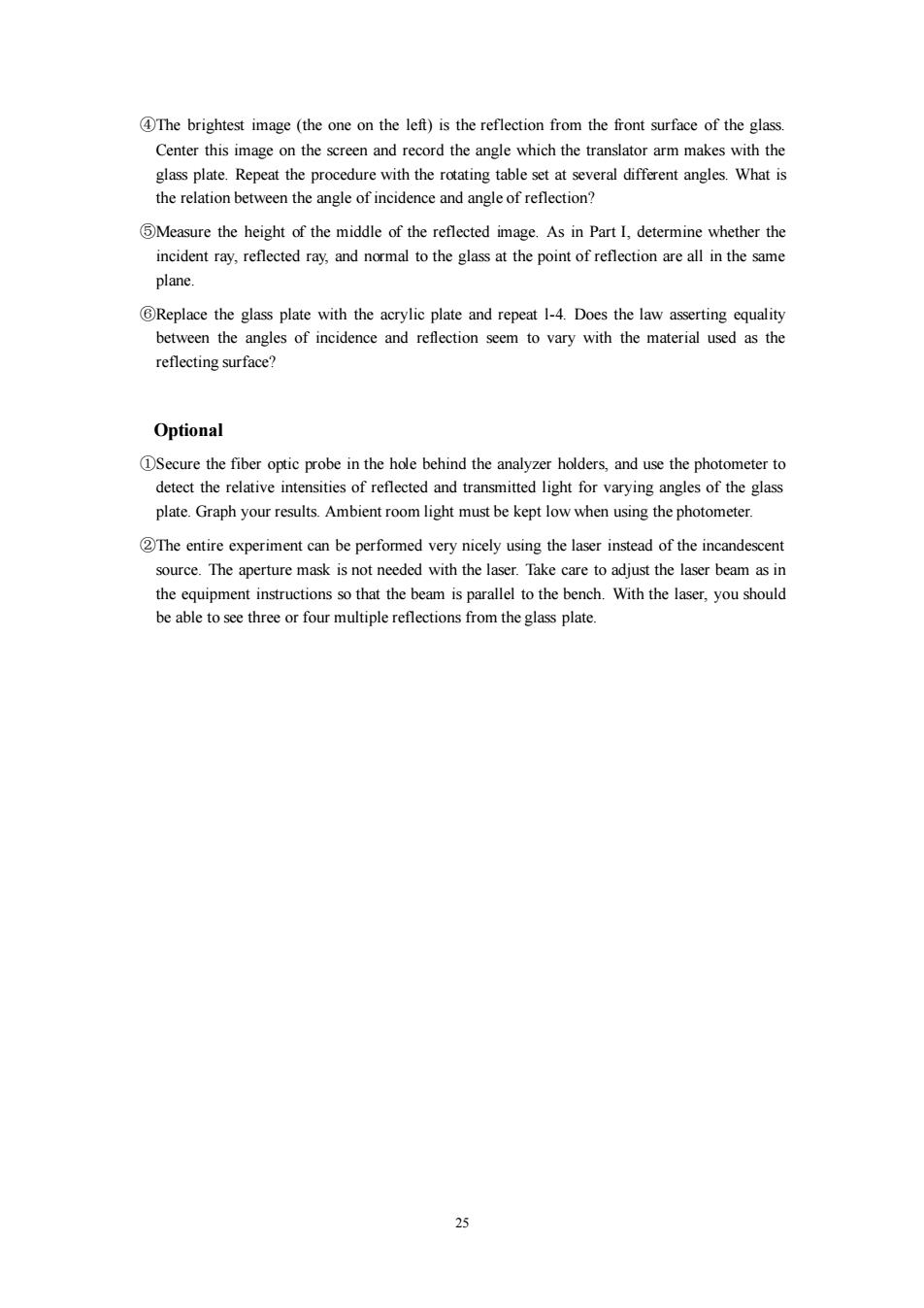正在加载图片...

4The brightest image(the one on the left)is the reflection from the front surface of the glass. Center this image on the screen and record the angle which the translator arm makes with the glass plate.Repeat the procedure with the rotating table set at several different angles.What is the relation between the angle of incidence and angle of reflection? 5Measure the height of the middle of the reflected image.As in Part I,determine whether the incident ray,reflected ray,and normal to the glass at the point of reflection are all in the same plane 6Replace the glass plate with the acrylic plate and repeat 1-4.Does the law asserting equality between the angles of incidence and reflection seem to vary with the material used as the reflecting surface? Optional DSecure the fiber optic probe in the hole behind the analyzer holders,and use the photometer to detect the relative intensities of reflected and transmitted light for varying angles of the glass plate.Graph your results.Ambient room light must be kept low when using the photometer. 2The entire experiment can be performed very nicely using the laser instead of the incandescent source.The aperture mask is not needed with the laser.Take care to adjust the laser beam as in the equipment instructions so that the beam is parallel to the bench.With the laser,you should be able to see three or four multiple reflections from the glass plate. 2325 ④The brightest image (the one on the left) is the reflection from the front surface of the glass. Center this image on the screen and record the angle which the translator arm makes with the glass plate. Repeat the procedure with the rotating table set at several different angles. What is the relation between the angle of incidence and angle of reflection? ⑤Measure the height of the middle of the reflected image. As in Part I, determine whether the incident ray, reflected ray, and normal to the glass at the point of reflection are all in the same plane. ⑥Replace the glass plate with the acrylic plate and repeat l-4. Does the law asserting equality between the angles of incidence and reflection seem to vary with the material used as the reflecting surface? Optional ①Secure the fiber optic probe in the hole behind the analyzer holders, and use the photometer to detect the relative intensities of reflected and transmitted light for varying angles of the glass plate. Graph your results. Ambient room light must be kept low when using the photometer. ②The entire experiment can be performed very nicely using the laser instead of the incandescent source. The aperture mask is not needed with the laser. Take care to adjust the laser beam as in the equipment instructions so that the beam is parallel to the bench. With the laser, you should be able to see three or four multiple reflections from the glass plate